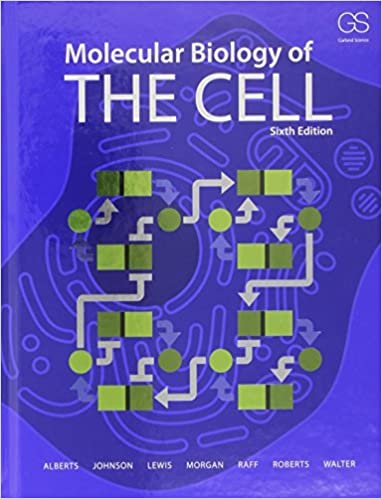
Molecular Biology Of The Cell 6th Edition by Bruce Alberts, Alexander Johnson, Julian Lewis, David Morgan, Martin Raff, Keith Roberts, Peter Walter
Edition 6ISBN: 978-0815345244
Molecular Biology Of The Cell 6th Edition by Bruce Alberts, Alexander Johnson, Julian Lewis, David Morgan, Martin Raff, Keith Roberts, Peter Walter
Edition 6ISBN: 978-0815345244 Exercise 17
6 Phosphorylase kinase integrates signals from the cyclic-AMP-dependent and  dependent signaling pathways that control glycogen breakdown in liver and muscle cells (Figure Q15-4). Phosphorylase kinase is com- posed of four subunits. One is the protein kinase that cata- lyzes the addition of phosphate to glycogen phosphorylase to activate it for glycogen breakdown. The other three sub- units are regulatory proteins that control the activity of the
dependent signaling pathways that control glycogen breakdown in liver and muscle cells (Figure Q15-4). Phosphorylase kinase is com- posed of four subunits. One is the protein kinase that cata- lyzes the addition of phosphate to glycogen phosphorylase to activate it for glycogen breakdown. The other three sub- units are regulatory proteins that control the activity of the  catalytic subunit. Two contain sites for phosphorylation by PKA, which is activated by cyclic AMP. The remaining sub- unit is calmodulin, which binds
catalytic subunit. Two contain sites for phosphorylation by PKA, which is activated by cyclic AMP. The remaining sub- unit is calmodulin, which binds  when the cytosolic
when the cytosolic  concentration rises. The regulatory subunits control the equilibrium between the active and inactive confor- mations of the catalytic subunit, with each phosphate and
concentration rises. The regulatory subunits control the equilibrium between the active and inactive confor- mations of the catalytic subunit, with each phosphate and  nudging the equilibrium toward the active confor- mation. How does this arrangement allow phosphorylase kinase to serve its role as an integrator protein for the mul- tiple pathways that stimulate glycogen breakdown?
nudging the equilibrium toward the active confor- mation. How does this arrangement allow phosphorylase kinase to serve its role as an integrator protein for the mul- tiple pathways that stimulate glycogen breakdown?
 dependent signaling pathways that control glycogen breakdown in liver and muscle cells (Figure Q15-4). Phosphorylase kinase is com- posed of four subunits. One is the protein kinase that cata- lyzes the addition of phosphate to glycogen phosphorylase to activate it for glycogen breakdown. The other three sub- units are regulatory proteins that control the activity of the
dependent signaling pathways that control glycogen breakdown in liver and muscle cells (Figure Q15-4). Phosphorylase kinase is com- posed of four subunits. One is the protein kinase that cata- lyzes the addition of phosphate to glycogen phosphorylase to activate it for glycogen breakdown. The other three sub- units are regulatory proteins that control the activity of the  catalytic subunit. Two contain sites for phosphorylation by PKA, which is activated by cyclic AMP. The remaining sub- unit is calmodulin, which binds
catalytic subunit. Two contain sites for phosphorylation by PKA, which is activated by cyclic AMP. The remaining sub- unit is calmodulin, which binds  when the cytosolic
when the cytosolic  concentration rises. The regulatory subunits control the equilibrium between the active and inactive confor- mations of the catalytic subunit, with each phosphate and
concentration rises. The regulatory subunits control the equilibrium between the active and inactive confor- mations of the catalytic subunit, with each phosphate and  nudging the equilibrium toward the active confor- mation. How does this arrangement allow phosphorylase kinase to serve its role as an integrator protein for the mul- tiple pathways that stimulate glycogen breakdown?
nudging the equilibrium toward the active confor- mation. How does this arrangement allow phosphorylase kinase to serve its role as an integrator protein for the mul- tiple pathways that stimulate glycogen breakdown?Explanation
Wnt planar polarity signaling pathway: A...
Molecular Biology Of The Cell 6th Edition by Bruce Alberts, Alexander Johnson, Julian Lewis, David Morgan, Martin Raff, Keith Roberts, Peter Walter
Why don’t you like this exercise?
Other Minimum 8 character and maximum 255 character
Character 255


